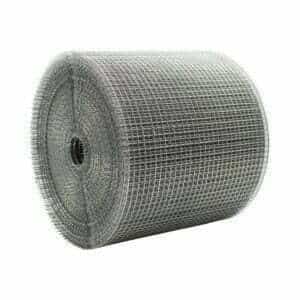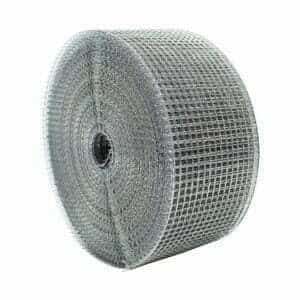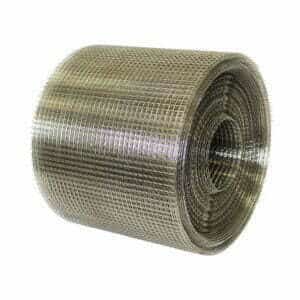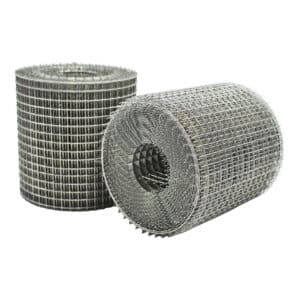







£29.49 inc VAT


This website is secured:
✔ The UK’s Largest Range Of Mesh Products
✔ FREE UK Delivery Included
✔ Immediate Express Dispatch From Stock
✔ Tracked Delivery with Order Updates
✔ 30-Day Returns Accepted
@ ☏ Trade Prices For Larger Quantities Available
RatMesh is a budget-friendly solution designed to block rats, mice, and other unwanted pests from entering undesired spaces. Before deploying, it’s crucial to address any existing infestations to avoid redirecting the issue to another part of the premise. When examining potential entry points, consider both ground level and higher elevations. Common vulnerable areas include damaged air bricks, vents, soffit and fascia boards, pipework, and gaps in mortar.
This robust mesh can be tailored to fit various openings and is easily installed using silicone adhesive or self-tapping screws, though cutting may require heavy-duty scissors or tin snips.
RatMesh is our standard budget-level rat and mouse blocking wire mesh. It blocks both rats and mice, plus other unwanted creatures from gaining entry where they’re not wanted.
Always try to eliminate previous infestations before using a rodent deterrent. Otherwise existing problems will simply be moved to a different point of the location in question.
Carry out research into the area in question. These points of ingress can be on higher levels as much as they’re likely to be on the ground floor.
Particular vulnerable points are:
Good rodent mesh can be cut to size to suit and installed around gaps, vents, voids, air bricks and similar points of ingress.
This mesh requires heavy-duty scissors or tin snips. It can be affixed with silicone adhesive or self tapping screws.
Our group have been in the mesh industry for over 150 years. We are one of the UK’s most trusted mesh suppliers because:
The Mesh Company has an enormous range of rodent mesh products. We truly are an industry leader among suppliers of weld mesh and woven wire materials. With the capabilities we have in-house, we can provide virtually anything you require.
Stainless, galvanised and copper materials are also available in large stock quantities at bargain prices.
See our blog for specific information on all of our various material options.
Installing rodent-proof soffit mesh can be an effective way to prevent rodents and other pests from entering your attic, basement or roof space. Here are the steps to follow for installation:
When it comes to selecting mesh size to stop rats, it is important to choose a mesh that is small enough to prevent rats from passing through. Rats can squeeze through very small openings, so it’s essential to select a mesh with a small enough opening to prevent their entry.
In general, a mesh with an opening of 6mm (1/4 inch) or smaller is recommended for preventing rats. This size of mesh is too small for adult rats to squeeze through, and also helps to prevent entry of smaller juvenile rats.
Wrapping a rat cage in mesh can help prevent rats and mice from escaping and keep them safe from predators. Here’s how to wrap a rat cage in mesh:
When it comes to selecting the best rodent mesh material, there are several options to choose from. Here are some of the most commonly used materials for rodent mesh, along with their advantages and disadvantages:
Check out our blog everything that you need to know about rat mesh for more information on this product. Our goal for our blogs and help guides is to answer as many questions as possible to help to explain the possibilities of mesh to our customers.
Contact our team today if you have any questions at all. We are always really keen to help in any way that we can.
We also offer similar products through our highly popular eBay store, check us out there too.
In 2008 Locker Wire Weavers launched The Mesh Company to bring our enormous range of wire mesh products to the general public for the first time. Previously wire mesh was only available for trade customers.
We continue to extend our range, and now proudly offer many forms of mesh and metal products for the best possible prices. We specialise in woven wire mesh. As a group we work closely with architects and designers to develop ground-breaking new applications for our multifunctional range of materials. We also offer state of the art fabrication and engineering for projects of all sizes.
Strong ties with the Warrington community continue to be at the very core of our business. We are proud to invest in the training and developing our staff of all levels in line with the traditions set by Thomas Locker, who founded our group 150 years ago when he invented the electronic loom. We continue to bring ingenuity and strong ethics to our day to day business.
The Mesh Company continues Warrington’s historic role in the wire industry. For more than 140 years, our group has been a leader in the supply and manufacture of woven wire mesh and wire cloth. Having been founded in Warrington, UK in 1878, Locker mesh products still retain the quality craftsmanship and spirit of innovation that were so characteristic then.
Available Options
You will find full rolls of this insect netting here. Please be advised that the majority of woven mesh is usually available in a maximum roll size of 30 metres by 1200mm. Please email us if you wish to discuss purchasing this mesh in any size – sales@themeshcompany.com.
Feel free to call us if you wish to discuss any of our products – (+ 44) 01925 406 602. We are always happy to help in any way that we are able to.
We also offer this product through our highly popular eBay store, check us out there too.




The largest range of wire mesh, chicken wire, wire fencing, woven wire mesh and perforated metal products in Europe, delivered direct from our Warrington warehouse.




Website by: Beech Web Services | Terms and Conditions | Cookie Policy | Privacy Policy | Website Terms and Conditions
Reviews
There are no reviews yet.